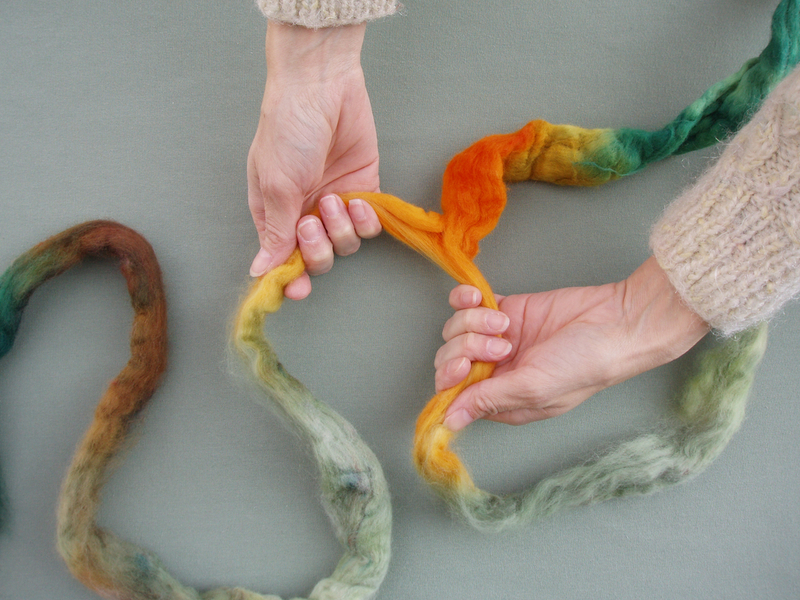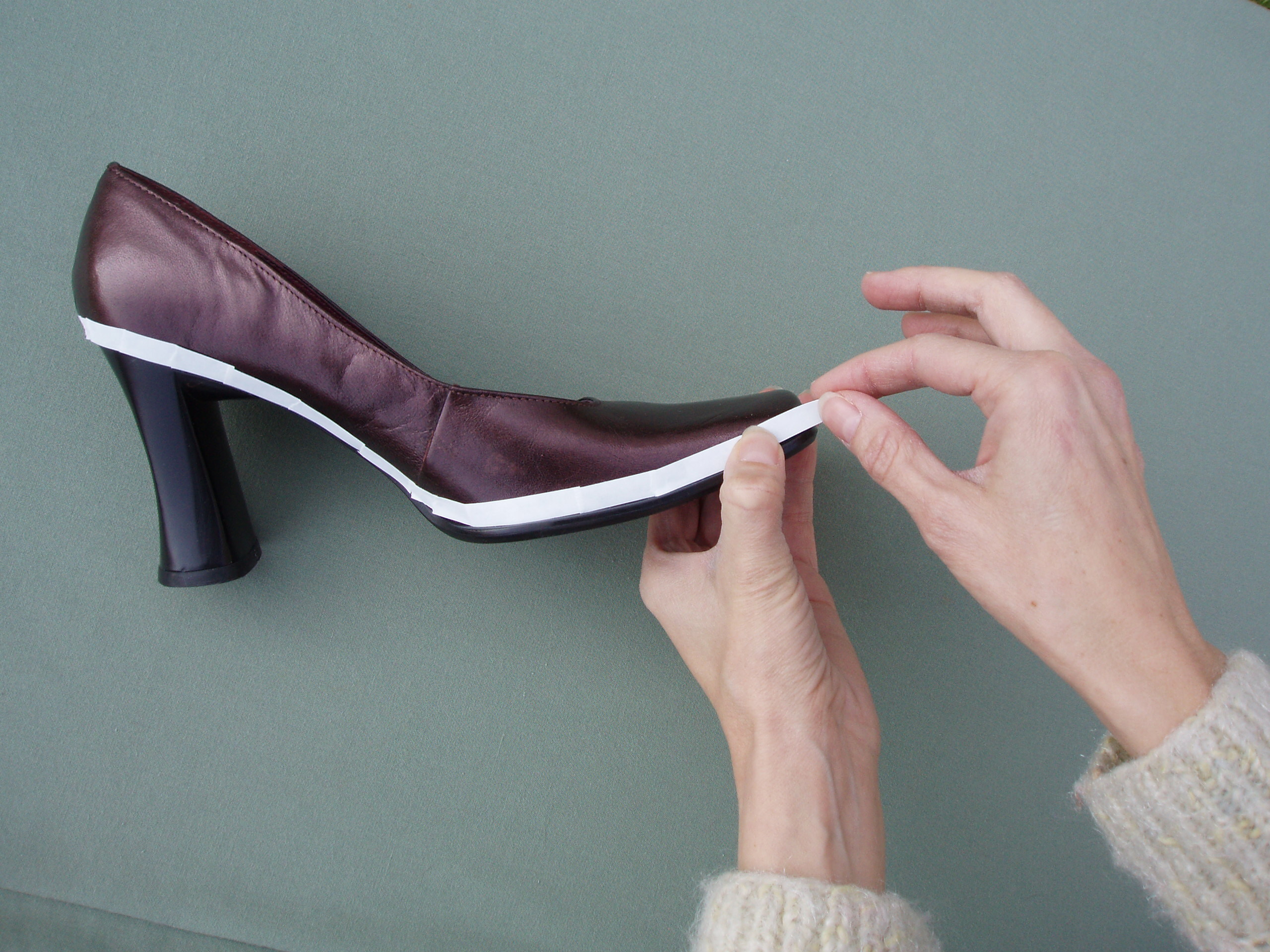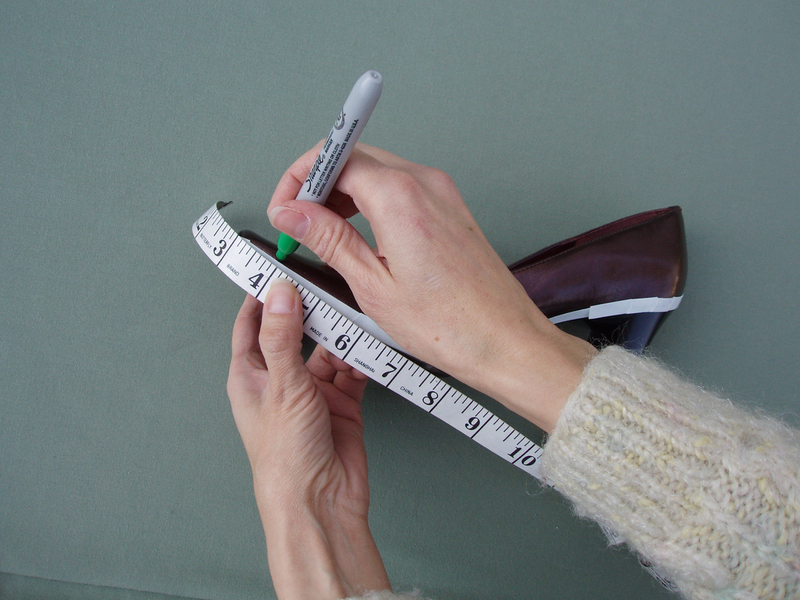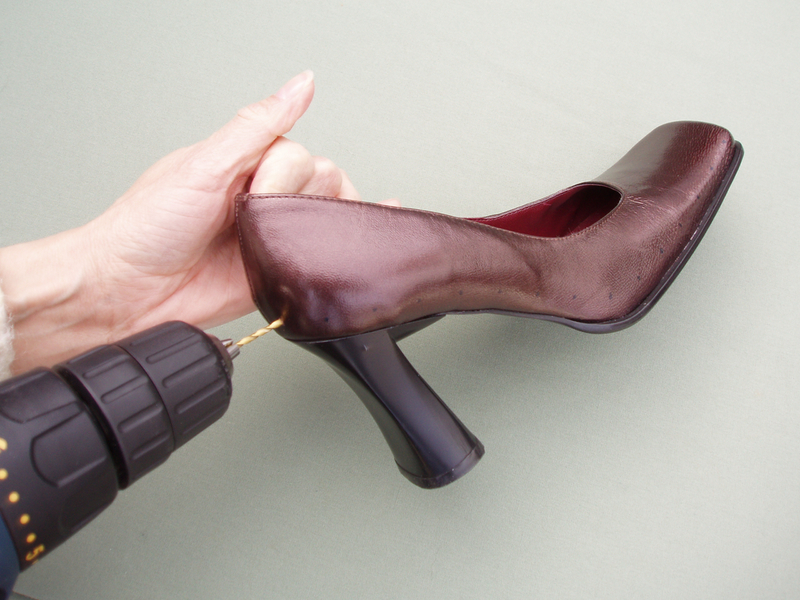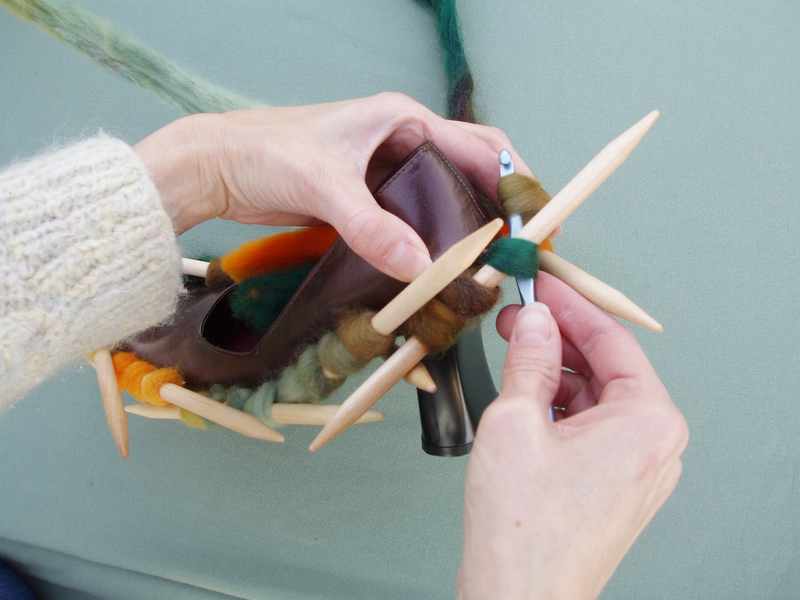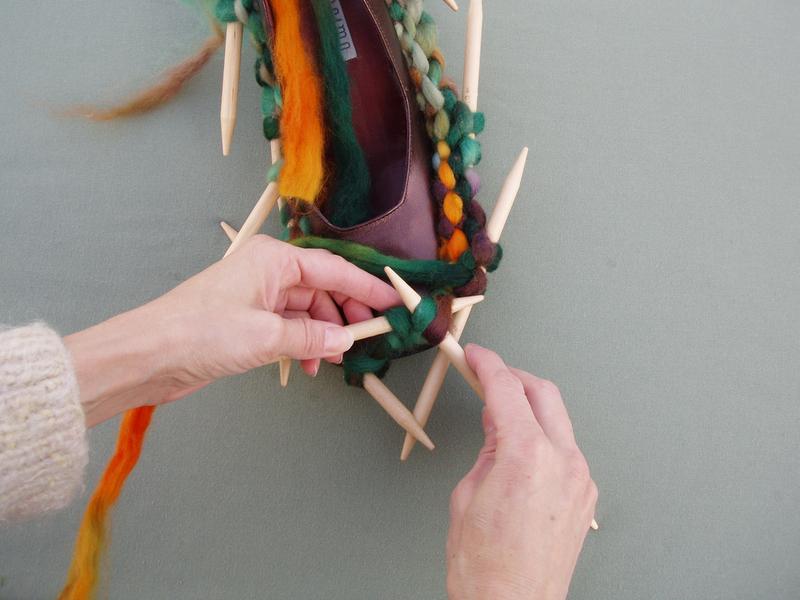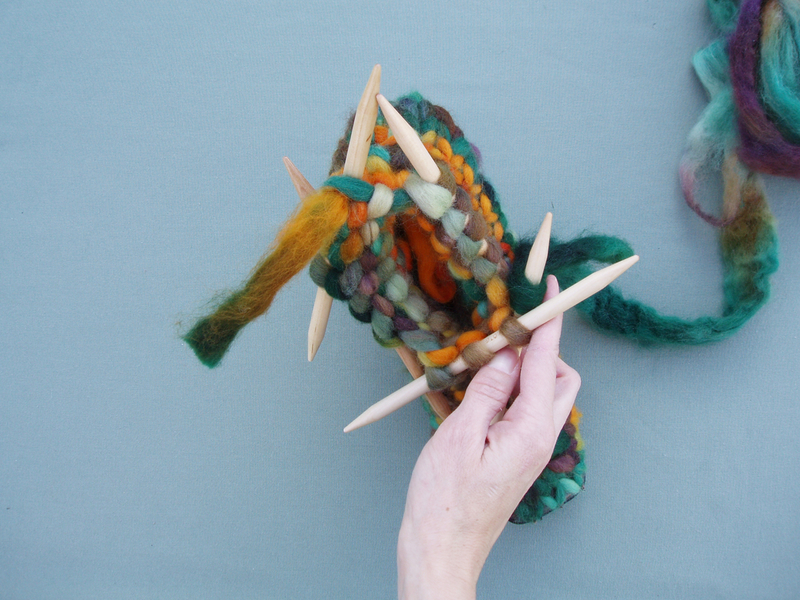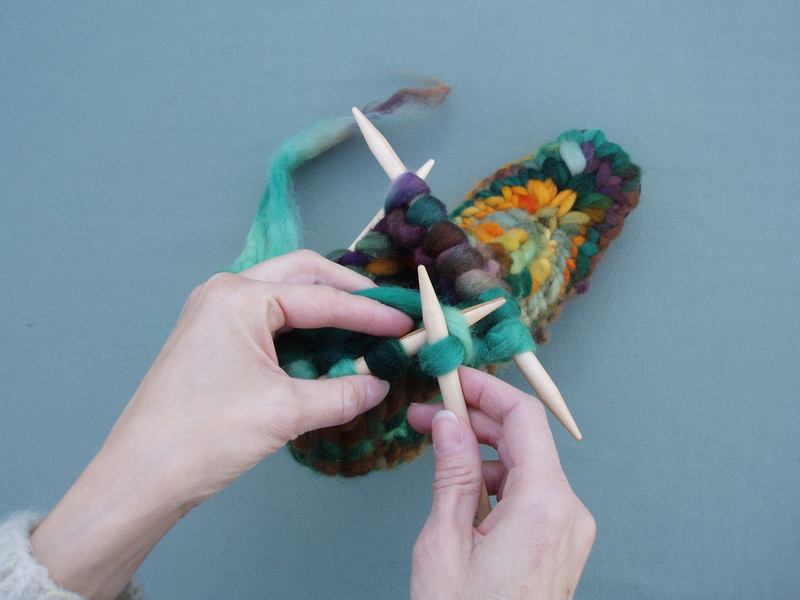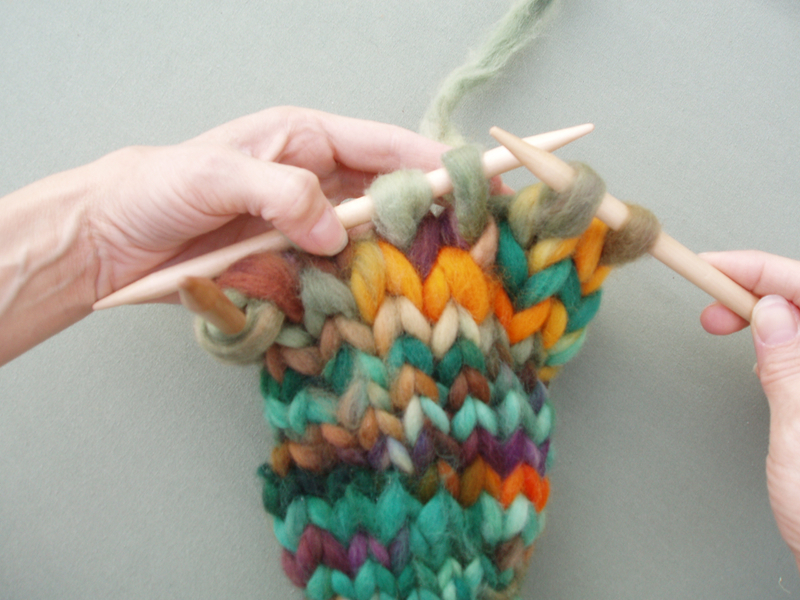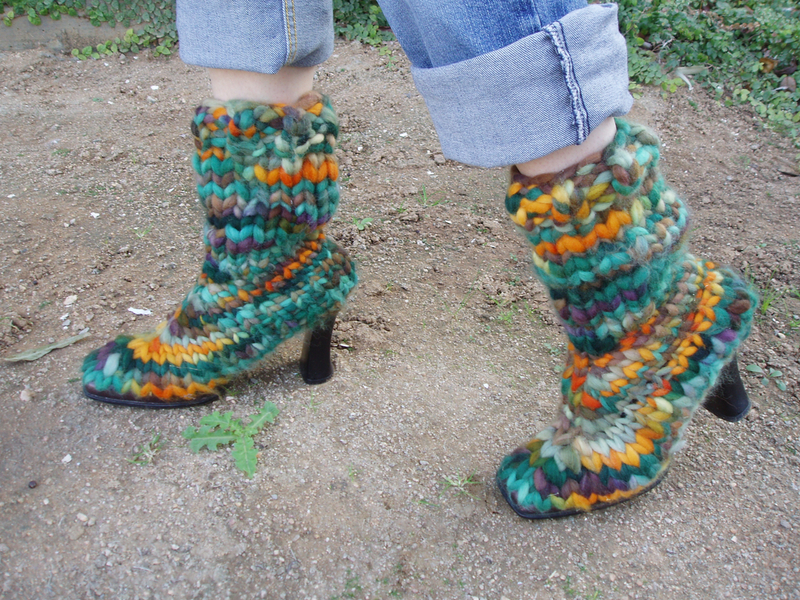Row 1. Using a size 10 or “J” crochet hook and a ball of roving, “knit” the first row of stitches by pulling one stitch through with the crochet hook and place it (transfer) to a DPN. After the last stitch of the very first row is knit, cast on one stitch by making a firm backwards loop onto the right-hand needle. This is your center back stitch.
Note: the reason we are using a crochet hook for knitting the first few rows is be- cause the stitches are very tight, since they are lodged between hard dpns and a fairly non-pliable shoe. The stitches will eventually loosen up around row 2 or 3.
Row 2. k14, ssk, k1 (center toe stitch, or c.t.s.), k2tog, k15.
Row 3. k13, ssk, k1 (c.t.s.), k2tog, k14.
Row 4. k12, ssk, k1 (c.t.s.), k2tog, k13.
Note: ssk means slip, slip, knit and is a famous left-slanting decrease. K2tog is a common right-slanting decrease. The different decreases make the boot more symmetrical-looking, neat, and attractive.
Row 5. k11, ssk, k1 (c.t.s.), k2tog, k12.
Row 6. k10, ssk, k1 (c.t.s.), k2tog, k11.
Row 7. k9, ssk, k1 (c.t.s.), k2tog, k10.
Row 8. k8, ssk, k1 (c.t.s.), k2tog, k9.
Row 9. k7, ssk, k1 (c.t.s.), k2tog, k8.
Row 10. k6, ssk, k1 (c.t.s.), k2tog, k7.
Row 11. Increase 1, k5, ssk, k1 (c.t.s.), k2tog, k5, increase 1, k1.
Row 12. k5, ssk, k1 (c.t.s.), k2tog, k6. The shoe is now completely covered, and the body of the boot has begun to take shape.
Note: now is a good time to tie in the cast-on ends, by weaving them in and out of the drilled holes. The other two ends can be weaved into the purl side of the fabric, as in normal knitting.



